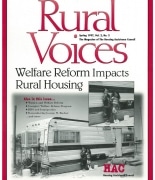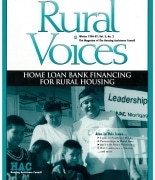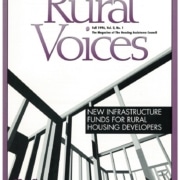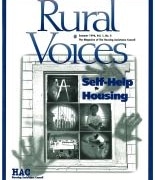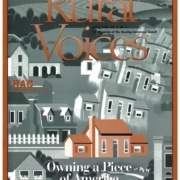Rural Voices: Welfare Reform Impacts Rural Housing
The Spring 1997 issue of Rural Voices provides an overview of the 1996 federal Welfare Reform Act and a summary of ways in which it may affect rural housing conditions.
This issue of Rural Voices focuses on welfare reform, one of the most important public policy issues of the 1990s. We hope to begin a conversation here about how welfare reform is affecting housing for low-income people in rural areas nationwide. This issue provides an overview of the 1996 federal Welfare Reform Act and a summary of ways in which it may affect rural housing conditions; an examination of welfare reform s impact on women-headed households, who as a group are the poorest category of households and the most likely to be affected; a description of some results of changes in Georgias state welfare program; and a look at how immigration reform affects Rural Housing Service programs.
In future issues we expect to include articles about welfare reform in other specific areas of the countty. We welcome contributions from readers about the impact welfare reform is having on rural housing conditions in your areas. The current issue of Rural Voices also recognizes the loss of an eloquent voice for rural housing and community development. George W. Rucker died in May after a long camer in rural research.

